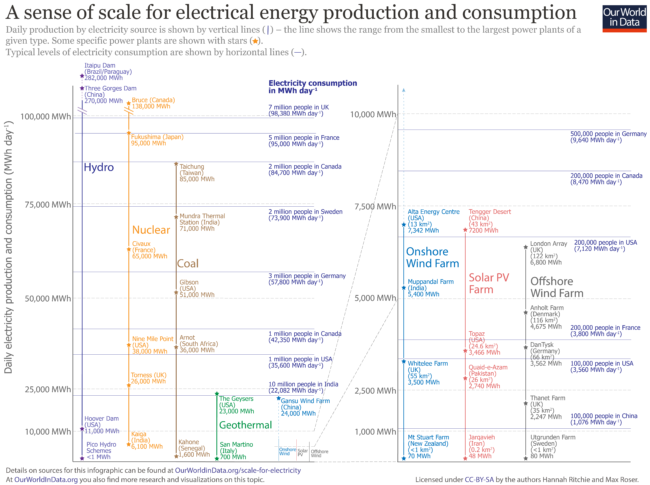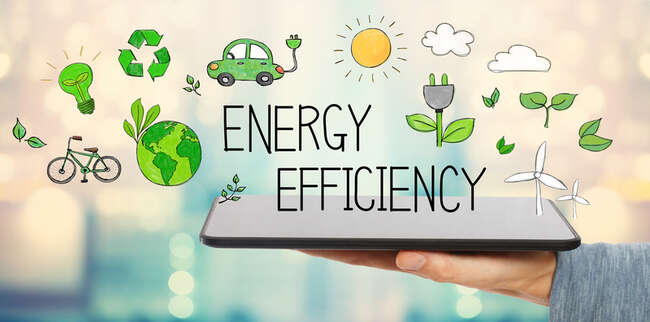Over the last week, I have made it my task to describe some of the challenges humanity faces in the 21st century and the science and technologies that can help or hinder us in overcoming them. In this posting, we look at the issue of energy. It seems appropriate since today is a celebration of Energy Efficiency Day (EE DAY 2021).
Established five years ago by energy utilities, and manufacturers in the industry, EE DAY promotes the sharing of information regarding programs, technologies, and policies that focus on efficiency whether it be in production, distribution, or consumption. This year’s EE DAY message is “Save Money. Cut Carbon. Breathe Easier.”
Our challenge as a species is to be able to achieve these three goals while dealing with the growing demand for energy around the globe both in the Developed and Developing worlds. Can we cut carbon and deliver more energy where it is needed? Do we have the capacity and solutions to achieve net-zero emissions globally by 2050 or sooner without negatively impacting consumers?
IRENA is the International Renewable Energy Agency, an intergovernmental organization that is supporting countries in their transition to a sustainable energy future. In a 2018 report, they describe a decarbonized power sector where renewable energy sources are responsible for meeting 85% of world demand.
But just what will that energy demand be? The World Energy Council (WEC) back in 2013 predicted global energy consumption will increase from 546 exajoules (EJ) in 2010 to between 696 and 879 by 2050, a 61% increase. One EJ is equivalent to almost 278 trillion kilowatt-hours. And a trillion kilowatt-hours is enough energy to light up a city the size of New York 90 times over.
In 2019, almost two-thirds of global electricity was generated using fossil fuels. The remaining third came from low-carbon sources including renewables and nuclear power generation. In the low-carbon group, renewables were responsible for 2.5 times the energy produced by nuclear sources. So the world IRENA is projecting as of 2050 where 85% of the energy we consume will be coming from renewable sources is an almost complete reversal of where we are today.
How do we get there from here?
If all net-new energy produced between now and 2050 were to come from non-fossil fuel sources it would mean an increase of up to 333 EJs in total energy production or more than 92 quadrillion kilowatt-hours of power. These are numbers that boggle the mind of utility companies as they look at their current capacities and infrastructure.
The following chart illustrates the distribution of energy production by source across our planet at present.

Progressing from the left to the right side of the above chart we have energy production broken down by source from hydroelectricity to nuclear, coal, geothermal, onshore and offshore wind, and solar. The centre and far right of the chart provide typical energy consumption statistics. Both production and consumption numbers are in megawatt-hours, a tiny fraction of the trillions of kilowatt-hours that both the WEC and IRENA perceive will be needed to meet energy demands by mid-century.
Imagine the tens of thousands of renewable energy projects that will be needed, first, to deal with the net new energy demand, let alone facilities required to replace the existing inventory of fossil-fuel-burning plants currently being operated by utilities around the world.
Consider the challenge of replacing coal-fired powerplants. A medium-sized one produces about 2,500 Megawatts daily. How many wind and solar projects will be needed to meet the equivalent of current energy consumption. Or if we are to keep coal-fired powerplants through to 2050 and beyond, what will be the required carbon capture technology investment needed to add to existing facilities to make them net-zero, and where will the captured emissions eventually be transported to and stored?
Energy Reductions Through Efficient Technology Application, Localization, and Conservation
Do we need to produce 879 exajoules of energy in 2050 for all of humanity to have access to reliable electricity sources? How else can the power gap between now and then be addressed? I can think of three improvements to the way we use energy that will mean less is needed.
Technology Efficiencies
A switch from existing HVAC systems to closed-loop heat pumps is one way for us to use less electricity to achieve the same end results. Heat pump technology has wide industrial applications as well.
MVR (mechanical vapour compression) technology is an open-loop version of heat pumps. A typical MVR system only requires 30 kilowatt-hours to evaporate a cubic metre of steam. Traditional evaporation technologies use 800 kilowatt-hours.
Cogeneration systems recover energy lost to heat or cold. Cogeneration units can be 90% efficient compared to traditional energy generation technologies which are 35 to 40% efficient. Cogeneration systems include spark ignition reciprocating engines, compression ignition reciprocating engines, combined-cycle turbines, open-cycle turbines, back-pressure steam turbines, and extraction steam turbines.
Infrared, high frequency and microwave radiation, ohmic, electron beam, and induction heating are all technologies that take electricity and convert 95% of it to heat. Whether applied to ovens and cooking surfaces in the home, or for use in industrial applications, less electricity is needed to produce the required results.
Distributed and Localized Power Generation
Utilities can look to solar panels on roofs and passive geothermal systems installed under homes to take away the amount of power that needs to be delivered to homes and businesses. Localized power generating technologies are available today and at increasingly affordable costs.
Solar and geothermal aren’t the only technologies to support localized and distributed power. Hydrogen-powered fuel cells, small wind turbine installations, energy power battery packs and mechanical storage technologies can increase energy capacity locally giving residential and business energy users the means to disconnect from the grid for much if not all of the time.
Distributed power generation systems technologies can be hardened to local environmental conditions more easily because the distances the energy has to travel from generation to consumption are far less taking weather extremes out of the equation. When you consider that hurricanes, wildfires, and floods are hard on utility power providers, the move to localized and distributed energy systems has considerable merit.
Energy Conservation
When you fly over cities in the Northern Hemisphere in the winter, if you had an infrared camera trained on the buildings below you would detect thermal energy being emitted into the surrounding air. The current stock of buildings throughout much of the world were not built to conserve energy.
In Canada, buildings use 13% of all the energy generated with up to 70% going into heating and cooling. If retrofitted the stock of existing buildings could cut energy use by 90%. And new buildings could incorporate materials and designs that support net-zero results. Net-zero buildings not only produce their own energy but the building envelopes (walls, doors and windows) are made from energy-efficient materials. A net-zero building can store the energy it generates and send surpluses to the grid.
Currently, Canada has only a handful of these net-zero commercial and residential properties in the country. It is also true for the United States, and the European Union. But in all of these countries building codes are being rewritten to net-zero standards.
















